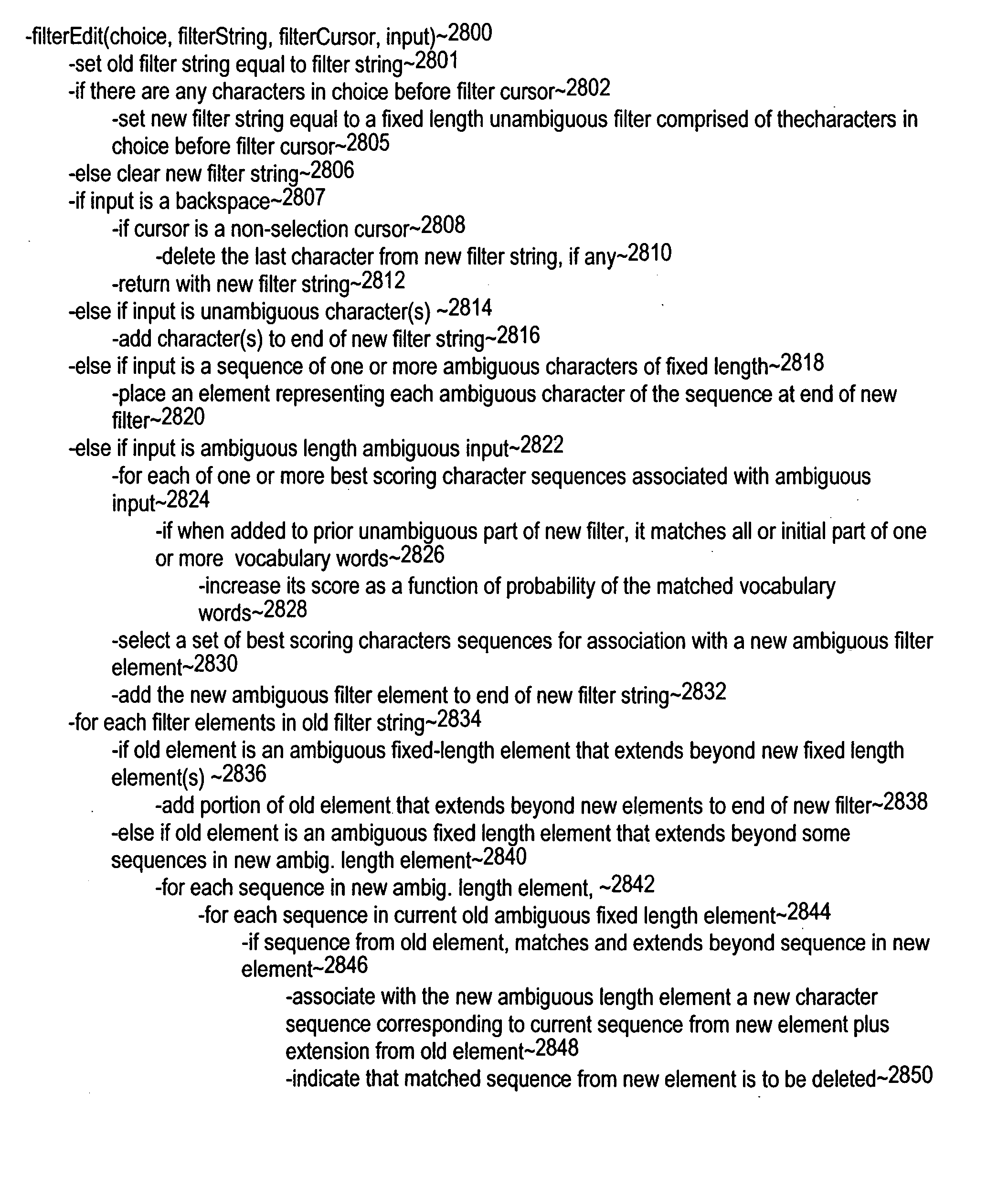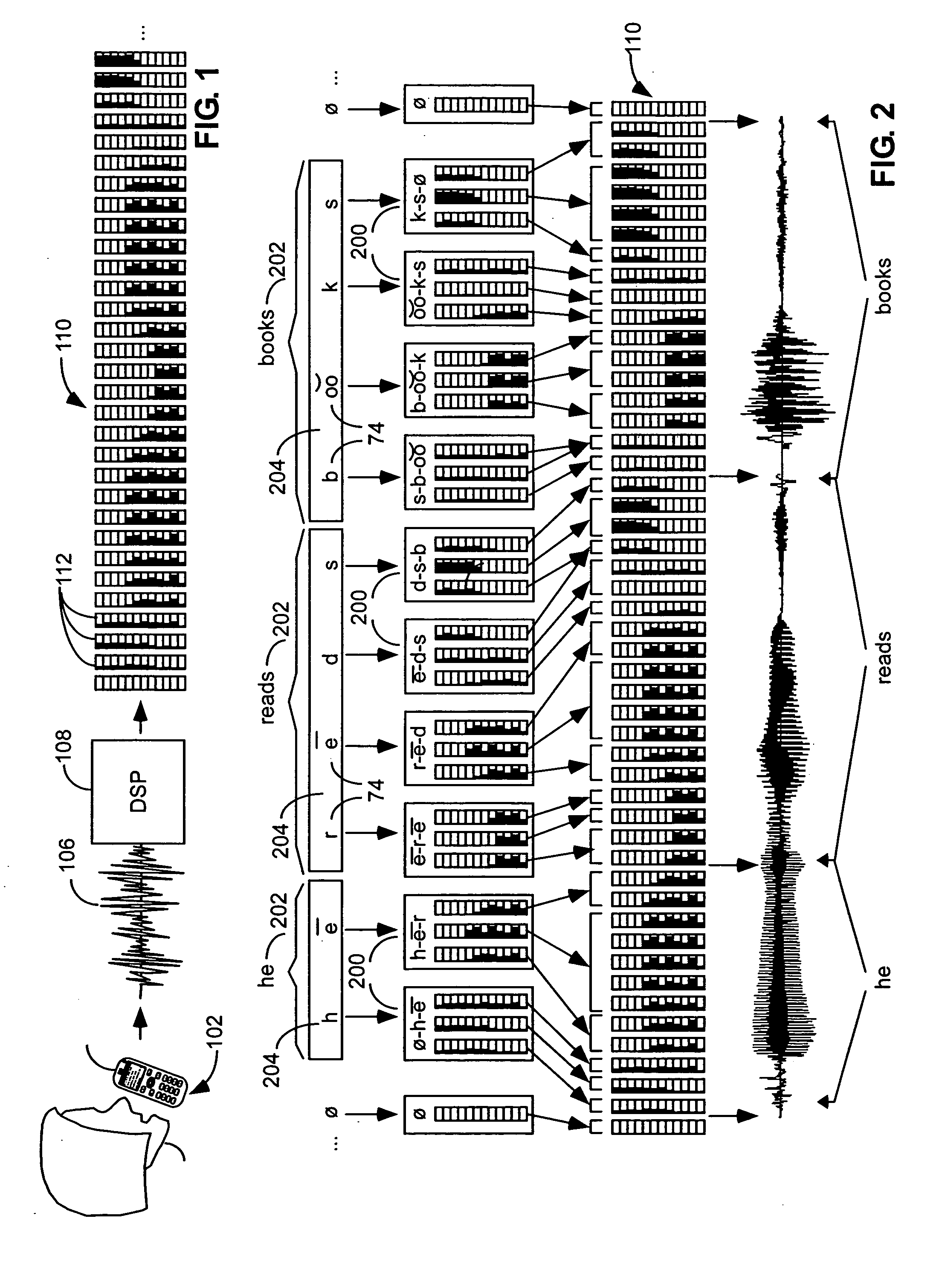Speech recognition using ambiguous or phone key spelling and/or filtering
a technology of ambiguous or phone key spelling and speech recognition, applied in speech analysis, speech recognition, instruments, etc., can solve the problem that the computational capacity of such smaller and/or more portable personal computers will only grow as time passes, and achieve the effect of accurate mapping of letter-identifying utterances and word recognition
- Summary
- Abstract
- Description
- Claims
- Application Information
AI Technical Summary
Benefits of technology
Problems solved by technology
Method used
Image
Examples
Embodiment Construction
[0117]FIG. 9 illustrates the personal digital assistant, or PDA, 900 on which many aspects of the present invention can be used. The PDA shown is similar to the Compaq iPAQ H3650 Pocket PC, the Casio Cassiopeia, and the Hewlett-Packard Jornado 525.
[0118] The PDA 900 includes a relatively high resolution touch screen 902, which enables the user to select software buttons as well as portions of text by means of touching the touch screen, such as with a stylus 904 or a finger. The PDA also includes a set of input buttons 906 and a two-dimensional navigational control 908.
[0119] In this specification and the claims that follow, a navigational input device that allows a user to select discrete units of motion on one or more dimensions will normally be considered to be included in the definition of a “button”. This is particularly true with regard to telephone interfaces, in which the Up, Down, Left, and Right inputs of a navigational device will be considered “phone keys” or “phone but...
PUM
 Login to View More
Login to View More Abstract
Description
Claims
Application Information
 Login to View More
Login to View More - R&D
- Intellectual Property
- Life Sciences
- Materials
- Tech Scout
- Unparalleled Data Quality
- Higher Quality Content
- 60% Fewer Hallucinations
Browse by: Latest US Patents, China's latest patents, Technical Efficacy Thesaurus, Application Domain, Technology Topic, Popular Technical Reports.
© 2025 PatSnap. All rights reserved.Legal|Privacy policy|Modern Slavery Act Transparency Statement|Sitemap|About US| Contact US: help@patsnap.com



